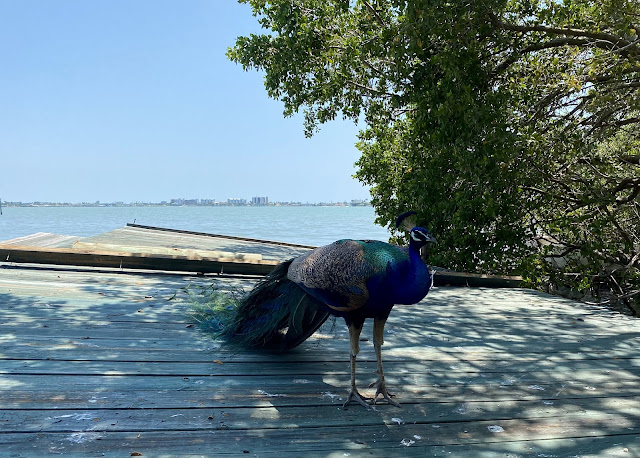For Mother’s Day Weekend my sister Liz arranged for our family to take a tour at Sacred Lands Preservation and Education in St. Petersburg. It is a small, unassuming property that we’ve driven by a thousand times but never realized it was home to one of the best preserved American Indian Mounds in Florida as well as the historic landing place of the 1528 Narvaez Expedition.
One of the peacocks hanging out on the roof.
A string of Spanish trade beads dating from the mid 1500s. The Spanish would exchange the beads with Indigenous tribes.
This plant is called coontie palm or arrowroot. Our tour guide explained that it was toxic, however, the toxin was water soluble. The Indigenous tribes who cooked with it would have to go through a process of “eight washes” before it was safe to consume.
One of the peacocks on the dock.
A peahen resting in brush.
Our tour guide David with one of the peacocks in full display.
A peacock alongside a pile of shells that are over 500 years old.
Some of the Indigenous pottery found on the site.
David explaining the history of the shells and pottery fragments.
An example of the thick, plain pottery for every day use alongside a thinner, more decorative piece most likely made for ceremonial use.
The sturdy core of a conch shell, which the Indigenous tribes would use as a tool for scrapping and grinding.
A pair of young Lubber Grasshoppers basking on a leaf.















No comments:
Post a Comment